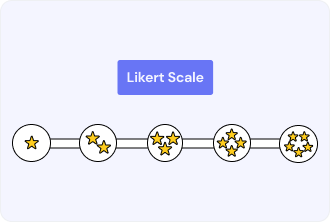Likert Scale Definition

The Likert scale is a five-point survey scale that gauges the attitude and interest any responding party may have towards any given subject matter. It’s useful for knowing what people are thinking. Scale ranges can measure: 5 – strongly agree, to 1 – strongly disagree. Mean score of 3 serves as the line between agreement and disagreement. Scores more than 3 are to agree very much, and scores less than 3 – to disagree very strong. Also, endless possibility of playing around with numbers and time.
Such a scale is used by giving a number to each available answer option on your 5 point scale. Than after, for each person taking survey math, the answer given to the respective number. So the number of responses for each option must be multiplied by the value. For example, if it’s ‘Strongly Agree’ and 10 people have chosen that option, then it’s 10*5. You do this for each answer that is there and find their sums. You would then find the total number of responses you have got and voila. To derive the average (median score), just simply divide this total by the number of people surveyed.
Advantages and disadvantages of using a Likert Scale
Likert Scale struts its stuff being a go-to tool when it comes to surveys and research since you have to manage and measure attitudes, opinions and user behaviors. They are bosting multiple perks from versatility to nuances responses they cater all stripes allowing users to pain nuanced picture within their opinion.
Likert Scale scales dish out hard numbers providing quantitative data analysis with the usage of statistical methods that allow rigorous comparison jazzing up data quality. Still there are disadvantages and limitations we can’t ignore — potential for response bias where respondents may tend to select some point without well-thought-out answers considering so they don’t see the error of their ways.